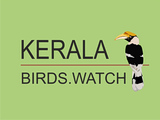search
classification
|
basic information
|
best photos
|
video
|
reports |
Booted Warbler
Hippolais caligata (Lichtenstein, 1823)
Description
The Booted Warbler is less than Sparrow. Upperparts are plain sandy ore buffy-grey; underparts are off-white buffy tinged. It resembles the Leaf Warblers but is distinguished by the color, faint supercilium and by the absence of dark eye-strip. The eye-ring is light and faint; legs are rosy-grey or yellowish-grey. The outer tail feathers have pale edges. The bill is strong and pointed. From the most resemble Chiffchaff it is distinguished by the light sandy color and light legs. Both sexes are similar. The seasonal differences of plumage are insignificant. Juveniles are similar on adults; upperparts are slightly rustier, flanks are browner. The contact features: underwings are white; the 1st primary is longer on 4-7 mm than upperwing coverts; 2nd primary is between 6th and 7th (probable between 7th and 8th) on length; the outer webs of the 3rd-6th primaries are narrower on tips. The top of the wing is formed by 3rd-5th primaries. Weight 7-12 grams, length 12-14, wing 5,5-6,5, wingspan 17-19 cm.
Biology
The Booted Warbler is common breeding migrant. It inhabits the bushes in river valleys, forests edges, and tall weed thickets; not necessarily near the water. On migration it occurs in the tree-shrub vegetations, forest-belts, gardens, groves and reed beds. It arrives in the spring's end, on early – mid-May, after the forests send out leaves. It breeds in separate pairs quite a close one from another. Sometimes it forms the colony from the several neighbor breeding pairs. Nest is built on the ground under the bush or bunch of grass, or in the bush up to 1 m high; from the dry grass; and is lined with feathers and some hair. Clutches of 3-6 eggs is in end May – late June. Both parents feed juveniles, which fledge in end June – late July. One brood per season; the repeated breeding after losing of the first nest is common. Autumn migration starts in the end of July, latest autumn migrants recorded in the end of August.
References
Gavrilov E. I., Gavrilov A. E. "The Birds of Kazakhstan". Almaty, 2005. В.К.Рябицев. "Птицы Урала, Приуралья и Западной Сибири". Екатеринбург, Изд-во Уральского университета, 2000. Э.И.Гаврилов. "Фауна и распространение птиц Казахстана". Алматы, 1999.












